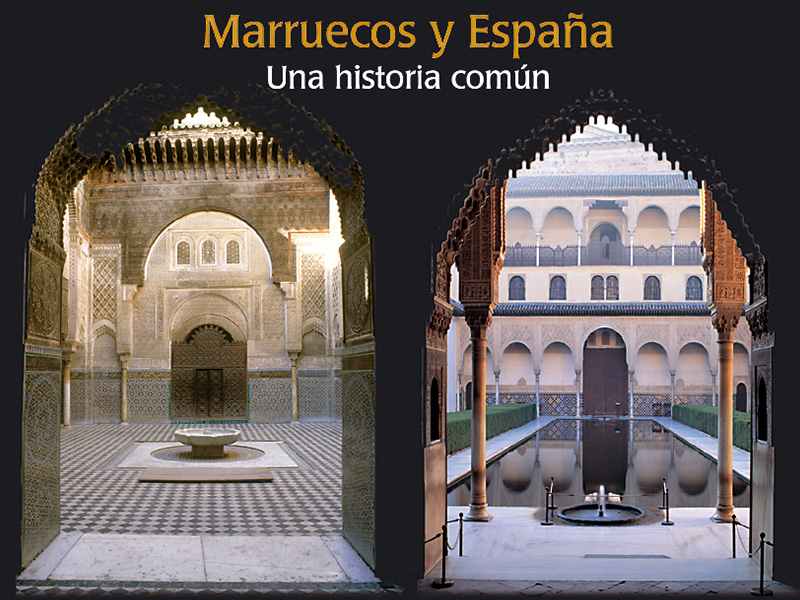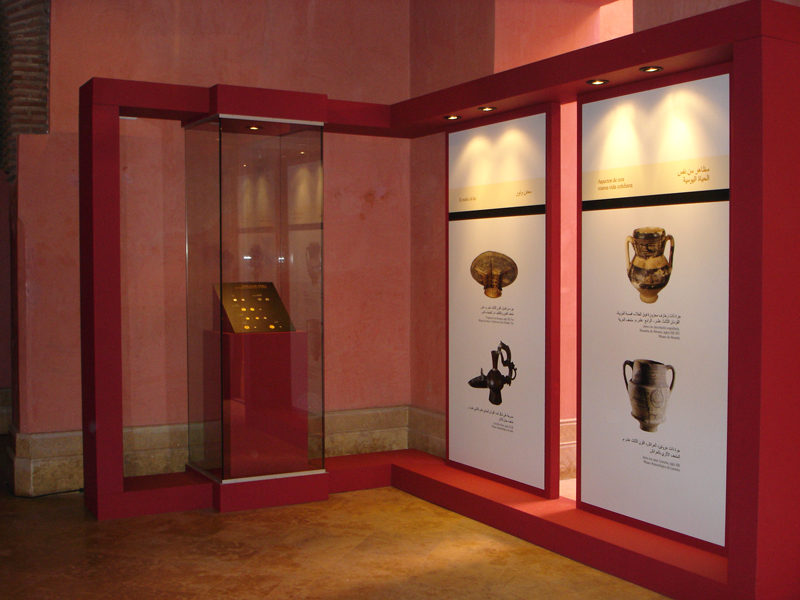Morocco and Spain. A common history
January-March, 2005
Royal Theatre, Marrakech. Morocco
No. of exhibits: 45
May-June, 2005
Exhibition Hall of Cervantes Institute, Tangier. Morocco
No. of exhibits: 35
Morocco and Spain… Could we describe them without continually referring to what the ancient men once called al-Adwatayn–the two shores? To both sides of the Straits, multiple paths alternated and crossed with each other, weaving indescribable ties between men. Of these multiple contacts, the most essential has survived to the clashes of history: a common cultural and artistic background, a specific art of living.
A large number of cities in the Iberian Peninsula owe a large part of their shape and monuments to that period, and even their origins. The Umayyad Caliphate, the Taifa Kingdoms, the Nasrids and the Almoravid, Almohad and Merinid dynasties from the Maghreb influenced the history of the Peninsula as much as the Christian Kingdoms of that period. The exhibition Morocco and Spain. A common history proposed an approach to the history and artistic contributions of these dynasties that wrote down the future of al-Andalus and the Iberian Peninsula.
Al-Andalus on the northern shore and the Maghreb on the southern one configured a territory joined by the Straits of Gibraltar. The human, artistic and commercial currents often ran from north to south; other times in the opposite direction, giving rise to a cultural interaction that configured a complementary universe of the Eastern world. An Andalusi-Maghreb culture was forged at that time that, once al-Andalus had disappeared after the fall of the Nasrid sultanate of Granada in 1492, perpetuated in Fes, Chaouen, Tetouan or Rabat, and lasts until today.
Once again, this exhibition aimed to be witness to that common history.


